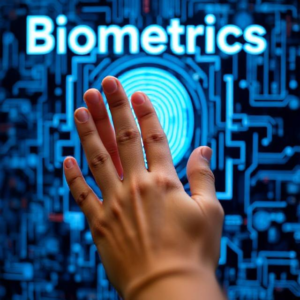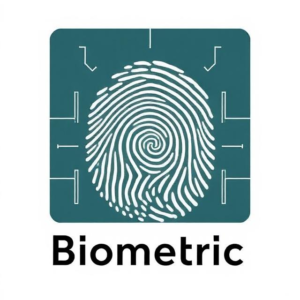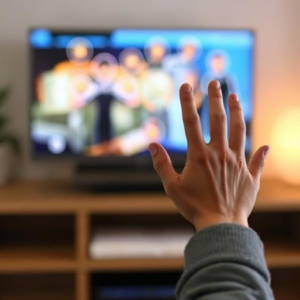1. What is Biometrics?
Biometrics is a way of using your unique physical or behavioral traits to identify who you are. It’s like how your fingerprint or face is one-of-a-kind to you—no one else has the same! Biometrics measures those characteristics to confirm your identity.

Some common biometric traits include:
- Fingerprints: The patterns on your fingers.
- Face recognition: The unique shape and features of your face.
- Iris or retina scanning: The unique patterns in your eyes.
- Voice recognition: The distinct sound of your voice.
- Hand geometry: The shape and size of your hand.
- Fingerprint scanning and facial recognition are the most common forms used today.
Biometric systems work by taking a scan of one of these traits and then comparing it with a stored version of your data (like your fingerprint or face scan in a database). If they match, you’re verified, and access is granted.
2. What is Authentication?
Authentication is the process of proving who you are. It’s like when you enter a password or use your fingerprint to unlock your phone—it’s your way of showing that you’re the authorized person.
In traditional systems, authentication is usually done with something you know (like a password) or something you have (like a keycard). But with biometric authentication, it’s something you are—your unique physical or behavioral trait.
3. Biometric Authentication Systems:
Biometric authentication is a type of system that uses biometrics to verify a person’s identity. Here’s how it works:
Step-by-Step Process:
- Enrollment: First, you register your biometric data. For example, when you first set up your phone’s fingerprint scanner, you scan your fingerprint a few times so the system can remember it.
- Verification: Later, when you try to unlock your phone or access a secure area, the system scans your finger (or face, etc.) again.
- Matching: The system compares the scan to the stored data (the one it saved during enrollment). If it matches, you are authenticated and granted access.
Types of Biometric Authentication:
- Fingerprint Scanning: Your fingerprint is scanned and stored. When you place your finger on the scanner again, it checks if it matches the stored pattern.
- Facial Recognition: Your face is scanned and stored in a system. Next time, the system checks your face against the stored data to make sure it’s you.
- Iris Scanning: The unique pattern in your iris (the colored part of your eye) is used to identify you. It’s considered highly accurate.
- Voice Recognition: Some systems use the sound and rhythm of your voice to confirm your identity.
4. Advantages of Biometric Authentication:
- Convenience: You don’t have to remember passwords or carry keys. Your body is the key!
- Security: It’s much harder for someone to fake your fingerprint or face than to guess a password.
- Speed: Biometric scans (like fingerprints or face scans) are quick—usually just a second or two.
5. Where Do We Use Biometric Authentication?
- Smartphones: Unlocking your phone using a fingerprint or face scan.
- Banking: Some banks use fingerprints or face recognition to access your account.
- Airports: Instead of showing your passport, some airports use facial recognition to speed up check-in and boarding.
- Security Systems: Offices or buildings may use fingerprint scanners to control who enters certain rooms.
6. Challenges of Biometric Systems:
- Privacy concerns: Since biometrics are unique to you, if someone steals your biometric data (like a fingerprint), it’s hard to change, unlike a password.
- Accuracy: Sometimes the system might not recognize you, especially if the sensor isn’t very good or if your finger is dirty or injured.
- Cost: Biometric systems can be more expensive to set up than traditional password-based systems.
7. How Biometric Authentication Compares to Other Types of Authentication:
- Something You Know (Password/PIN): If someone finds or guesses your password, they can access your account. But biometrics are harder to steal.
- Something You Have (Keycards, Phone): If you lose your keycard or phone, someone might be able to use it to gain access. But biometrics can’t be lost or stolen in the same way.
In Simple Terms:
- Biometrics is about using your unique body traits (like your fingerprint or face) to identify yourself.
- Authentication is the process of proving that you are who you say you are.
- Biometric authentication systems use things like your fingerprint, face, or voice to make sure it’s really you trying to get into something, whether it’s your phone, bank account, or a secure building.











